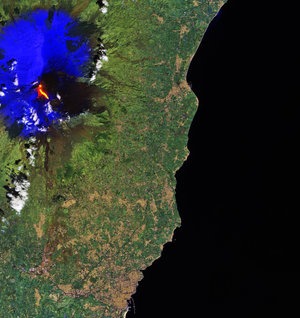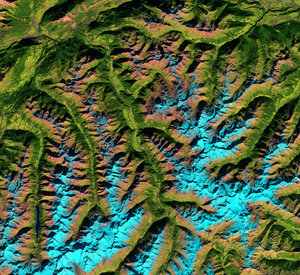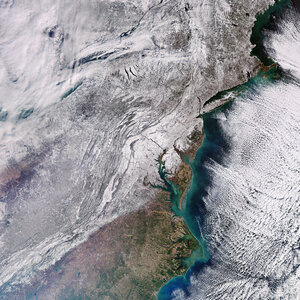Accept all cookies Accept only essential cookies See our Cookie Notice

About ESA
The European Space Agency (ESA) is Europe’s gateway to space. Its mission is to shape the development of Europe’s space capability and ensure that investment in space continues to deliver benefits to the citizens of Europe and the world.
Highlights
ESA - United space in Europe
This is ESA ESA facts Member States & Cooperating States Funding Director General Top management For Member State Delegations European vision European Space Policy ESA & EU Space Councils Responsibility & Sustainability Annual Report Calendar of meetings Corporate newsEstablishments & sites
ESA Headquarters ESA ESTEC ESA ESOC ESA ESRIN ESA EAC ESA ESAC Europe's Spaceport ESA ESEC ESA ECSAT Brussels Office Washington OfficeWorking with ESA
Business with ESA ESA Commercialisation Gateway Law at ESA Careers Cyber resilience at ESA IT at ESA Newsroom Partnerships Merchandising Licence Education Open Space Innovation Platform Integrity and Reporting Administrative Tribunal Health and SafetyMore about ESA
History ESA Historical Archives Exhibitions Publications Art & Culture ESA Merchandise Kids Diversity ESA Brand Centre ESA ChampionsLatest
Space in Member States
Find out more about space activities in our 23 Member States, and understand how ESA works together with their national agencies, institutions and organisations.
Science & Exploration
Exploring our Solar System and unlocking the secrets of the Universe
Go to topicAstronauts
Missions
Juice Euclid Webb Solar Orbiter BepiColombo Gaia ExoMars Cheops Exoplanet missions More missionsActivities
International Space Station Orion service module Gateway Concordia Caves & Pangaea BenefitsLatest
Space Safety
Protecting life and infrastructure on Earth and in orbit
Go to topicAsteroids
Asteroids and Planetary Defence Asteroid danger explained Flyeye telescope: asteroid detection Hera mission: asteroid deflection Near-Earth Object Coordination CentreSpace junk
About space debris Space debris by the numbers Space Environment Report In space refuelling, refurbishing and removingSafety from space
Clean Space ecodesign Zero Debris Technologies Space for Earth Supporting Sustainable DevelopmentLatest
Applications
Using space to benefit citizens and meet future challenges on Earth
Go to topicObserving the Earth
Observing the Earth Future EO Copernicus Meteorology Space for our climate Satellite missionsCommercialisation
ESA Commercialisation Gateway Open Space Innovation Platform Business Incubation ESA Space SolutionsLatest
Enabling & Support
Making space accessible and developing the technologies for the future
Go to topicBuilding missions
Space Engineering and Technology Test centre Laboratories Concurrent Design Facility Preparing for the future Shaping the Future Discovery and Preparation Advanced Concepts TeamSpace transportation
Space Transportation Ariane Vega Space Rider Future space transportation Boost! Europe's Spaceport Launches from Europe's Spaceport from 2012Latest


Earth from Space: Clouds or snow?
Thank you for liking
You have already liked this page, you can only like it once!
These two images acquired by Copernicus Sentinel-2 highlight how the mission can help distinguish between clouds and snow.
The Copernicus Sentinel-2 satellites each carry a high-resolution multispectral imager to provide optical images in 13 spectral bands, from the visible to the shortwave-infrared region of the electromagnetic spectrum. These two images, from August 2024, capture the same area over the Australian Alps in southeast Australia, but have been produced using the instrument’s different spectral channels.
On the left, the true-colour image shows the area as the human eye would see it. As we can see, the area is covered with clouds. The long, straight lines are contrails from aircraft, most likely travelling along the busy route between Canberra and Melbourne.
The image features a number of snow-covered and cloud-covered areas, but how can we distinguish them? Both appear white, as they both reflect visible light. This is where different band combinations can help.
The false-colour image on the right includes the shortwave-infrared bands, which highlight snow and clouds differently. Snow and ice appear in electric blue, and water vapour, or clouds, can be seen in white.
By comparing the two images, it is now easy to identify snow in blue on the right and thicker clouds in white towards the centre of the image. Thinner layers of clouds and contrails on the other hand are barely visible.
The task of separating clouds from snow is also a critical classification issue when using Artificial Intelligence (AI) to process satellite images – a field that is rapidly growing. By analysing multispectral images, the newest AI algorithms are learning to distinguish between these two elements.
Satellite missions such as Copernicus Sentinel-2 that can provide observations in multiple spectral bands are key to this task, providing a wealth of information in different views of our planet.
-
CREDIT
contains modified Copernicus Sentinel data (2024), processed by ESA -
LICENCE
CC BY-SA 3.0 IGO or ESA Standard Licence
(content can be used under either licence)

Earth from Space: First seasonal snow

Etna erupts

Let it snow

Ötztal Alps















 Germany
Germany
 Austria
Austria
 Belgium
Belgium
 Denmark
Denmark
 Spain
Spain
 Estonia
Estonia
 Finland
Finland
 France
France
 Greece
Greece
 Hungary
Hungary
 Ireland
Ireland
 Italy
Italy
 Luxembourg
Luxembourg
 Norway
Norway
 The Netherlands
The Netherlands
 Poland
Poland
 Portugal
Portugal
 Czechia
Czechia
 Romania
Romania
 United Kingdom
United Kingdom
 Slovenia
Slovenia
 Sweden
Sweden
 Switzerland
Switzerland

























